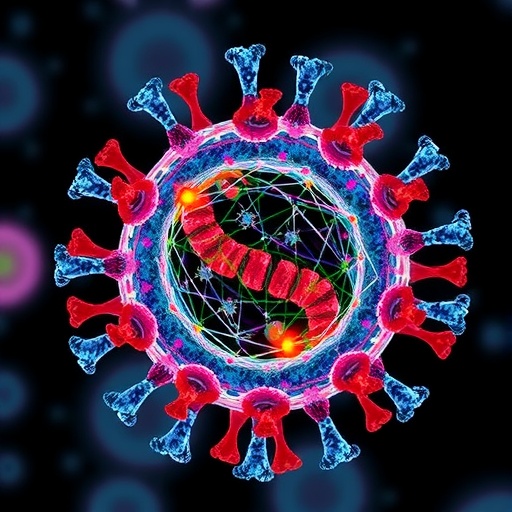The faithful segregation of chromosomes during mitosis is a fundamental process essential for cellular proliferation and genomic stability. At the heart of this critical function lies the centromere, a specialized chromatin domain that ensures proper kinetochore assembly and attachment to spindle microtubules. While the epigenetic landscape of centromeres has been extensively studied, particularly the role of the histone H3 variant CENP-A in marking centromeric nucleosomes, the nuanced mechanisms underlying the maintenance of centromeric chromatin and its associated histone modifications remain incompletely understood. A groundbreaking study conducted by a collaborative team from Wuhan University and the Children’s Hospital of Chongqing Medical University has shed new light on the pivotal role of G9a-mediated H3K9 dimethylation (H3K9me2) in safeguarding centromere integrity and promoting accurate chromosome segregation.
Centromeric chromatin is uniquely organized to balance structural rigidity with dynamic functional requirements. Central to this organization is the enrichment of nucleosomes containing CENP-A, which demarcates the core centromeric domains. Flanking these domains are pericentromeric regions enriched with repressive heterochromatin marks, notably di- and tri-methylation of lysine 9 on histone H3 (H3K9me2 and H3K9me3). Historically, the trimethylated form, H3K9me3, deposited by the SUV39H methyltransferase, has been recognized as a canonical marker of transcriptionally silent heterochromatin, critical for maintaining chromosomal stability. However, the biological significance and mechanistic roles of G9a (also known as EHMT2), the primary methyltransferase responsible for generating H3K9me2 at the (peri)centromeric regions, have remained enigmatic until this recent investigation.
The researchers harnessed a multifaceted experimental approach combining chromatin immunoprecipitation, advanced imaging, and functional genomics to elucidate how G9a-mediated H3K9me2 influences centromeric chromatin configuration and mitotic fidelity. Key findings revealed that G9a/GLP methyltransferase complexes localize specifically to centromeres, enriching local H3K9me2 without significantly affecting adjacent heterochromatin domains. This localized modification is indispensable for the orchestration of a chromatin environment conducive to accurate chromosome segregation. Notably, depletion of G9a leads to a pronounced prolongation of mitosis and an increase in chromosomal missegregations, hallmark indicators of compromised centromere function.
Intriguingly, the study uncovered that G9a-mediated H3K9me2 acts as a gatekeeper that limits the spatial distribution of the repressive H3K9me3 mark, effectively preventing its encroachment into the core centromeric domains. This containment preserves the integrity of centromeric chromatin and facilitates the recruitment and efficient functioning of RNA Polymerase II locally. Consequent transcriptional activity at the centromere gives rise to R-loops, three-stranded nucleic acid structures comprised of an RNA-DNA hybrid and displaced single-stranded DNA, which are increasingly recognized as regulatory elements in chromatin biology. The maintenance of these R-loops is essential for proper loading of Replication Protein A (RPA), a single-strand DNA-binding protein critical for DNA replication and repair processes, including activation of the ATR-Chk1 DNA damage response pathway.
G9a knockdown elicited a cascade of epigenetic and transcriptional disruptions, starting with the invasion of H3K9me3 into centromeric cores, leading to diminished recruitment of RNA Polymerase II. This diminished transcriptional output compromised the formation of centromeric R-loops, thereby impairing RPA loading. The attenuation of RPA occupancy undermines the activation of the ATR-Chk1-Aurora B kinase signaling axis, a crucial cascade that ensures correction of erroneous kinetochore-microtubule attachments during mitosis. Aurora B kinase functions as a central mitotic regulator to resolve attachment errors, thus ensuring chromosome biorientation and faithful segregation. Loss of G9a activity therefore precipitates a failure in this checkpoint mechanism, resulting in chromosome missegregations and subsequent genomic instability.
Furthermore, the study highlighted alterations in the centromeric deposition of CENP-A upon G9a depletion. As CENP-A nucleosomes are fundamental for kinetochore nucleation and function, their misincorporation exacerbates centromere dysfunction, further contributing to chromosomal instability. These findings provide compelling evidence linking epigenetic regulation by G9a to the structural and functional stability of centromeres. The link between G9a somatic mutations and defective chromosome segregation observed in cancer cells offers a molecular explanation for the tumorigenic potential associated with such mutations. This insight underscores the clinical relevance of G9a-mediated epigenetic modulation in the pathogenesis of genomic instability-related diseases, including cancer.
Mechanistically, the data posit that G9a-mediated H3K9me2 establishes a unique chromatin landscape that integrates transcriptional activity, DNA replication stress responses, and mitotic checkpoint signaling. By preventing the unwarranted spread of heterochromatin marks and promoting centromeric transcription coupled with R-loop formation, G9a ensures the proper orchestration of protein complexes essential for checkpoint surveillance and chromosome segregation. This multifaceted control reveals a novel layer of epigenetic regulation that bridges chromatin dynamics with cell cycle progression and genome maintenance.
From a therapeutic standpoint, these findings open promising new avenues for targeting G9a and its associated pathways in diseases characterized by chromosomal instability, most notably cancer. Small molecule inhibitors of G9a have been explored primarily in the context of their influence on global gene expression and oncogenic pathways; however, their impact on centromere integrity and mitotic fidelity warrants careful reevaluation. Therapeutic modulation of G9a activity could potentially restore proper centromere function or selectively sensitize tumor cells exhibiting G9a dysfunction, highlighting the need for comprehensive studies assessing G9a-targeted interventions within the framework of chromosomal stability.
In conclusion, this landmark study significantly advances our understanding of the epigenetic regulation governing centromere integrity. It establishes G9a-mediated H3K9me2 as a crucial safeguard that choreographs a delicate balance between heterochromatin demarcation, centromeric transcription, R-loop dynamics, and mitotic checkpoint activation. The elucidation of G9a’s role in maintaining chromosome segregation fidelity not only deepens fundamental chromatin biology but also has profound implications for therapeutic strategies aimed at combating genome instability in human disease. As research continues to unravel the complexity of centromeric epigenetics, these insights position G9a as a central node connecting chromatin modification enzymes with the maintenance of genome integrity during cell division.
Subject of Research: Epigenetic regulation of centromere integrity and chromosome segregation
Article Title: G9a-mediated H3K9me2 preserves centromere integrity and facilitates faithful chromosome segregation
News Publication Date: Not specified
Web References: http://dx.doi.org/10.1016/j.scib.2025.08.023
Image Credits: ©Science China Press
Keywords: G9a, H3K9me2, centromere integrity, chromosome segregation, CENP-A, heterochromatin, R-loops, ATR-Chk1-Aurora B pathway, epigenetics, mitosis, genome stability, chromosome missegregation




